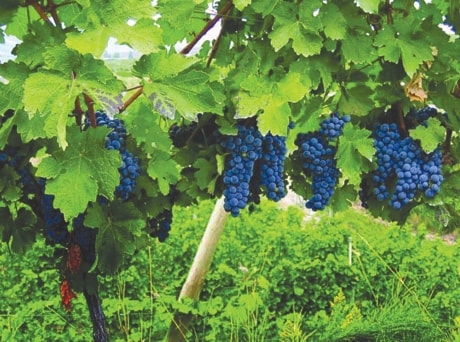I love the desert! Dramatic rock outcroppings, vegetation and animals with a survivalist attitude and great bird watching all make it a favoured landscape for my vacations.
Lots of Albertans think a trip to Phoenix and the Sonoran desert in winter is a good idea: in the summer, not so much.
But you can get your summer desert fix without extreme heat (although who would complain after spring’s cool start) by heading to Osoyoos, B.C., and the northern tip of the Great-Basin desert. This desert extends south all the way to the Sonoran desert in Mexico. Some of the plants and animals found near Osoyoos are the same as those at higher elevations in Mexico. And if you like insects and spiders, there are over 20 species found here that exist nowhere else in the world.
The Desert Centre, on the northwest edge of Osoyoos, is a great place to get orientated. The 50-hectare site hosts one of the largest concentrations of species at risk in Canada (over 100 rare plants and 300 rare invertebrates) and some species, like the ghostly-pale pallid bat, are found nowhere else in Canada.
The region is also home to 300 bird species that you can watch from the centre’s raised boardwalks. I loved the boardwalks as I felt they reduced my odds of a rattlesnake encounter. I respect snakes but like many people, I’d rather bird watch than snake watch!
As I observed some western bluebirds feeding their young, the sweet smell of sage and antelope bushes dropped my stress level faster than visiting one of the region’s many wineries.
The land bordering the Desert Centre is covered with vineyards and houses, and the signs of new development are everywhere. Understandable, when you consider many Canadians are reluctant prisoners to seven months of winter.
The chance to live in a warmer climate is appealing. Some experts predict another 12,000 people will move to the area in little over a decade, but unchecked development could spell the end of Canada’s desert. Fortunately, there is a move afoot to create a new national park, the South Okanagan-Similkameen. I’m not sure if the park’s SOS acronym is accidental or a reflection of the area’s environmental status!
Planning for the park started in 2003 and hopefully a new park will be established soon. Opinion polls show that nearly two-thirds of local residents favour the park but not everyone is supportive. I saw “No National Park” signs posted on several fences.
“Most of those are put up by farmers and ranchers who are afraid of losing their grazing areas,” explained Alison Jackle, a local business owner. Parks Canada is addressing these concerns and no ranches or private land will be expropriated in the park creation.
Like most vacationers, I try to block out life’s complexities while I travel — but I relaxed a little deeper in my lawn-chair knowing a national park for the South Okanagan-Similkameen would preserve a rare Canadian destination while I enjoyed the warm weather.
To learn more about Canada’s desert and the South Okanagan-Similkameen National Park:
l Spend a half-day at the Desert Centre in Osoyoos www.desert.org.
l Watch an interpretative show at the Nk’mip Desert Cultural Centre www.nkmipdesert.com.
l Find out about the proposed park at www.sosnationalpark.com.
Carol Patterson of Kalahari Management Inc. is a strategic planner, author and public speaker for nature tourism and emerging destinations. When she isn’t travelling for work, she is travelling for fun. More of Carol’s adventures can be found at www.kalahari-online.com.
